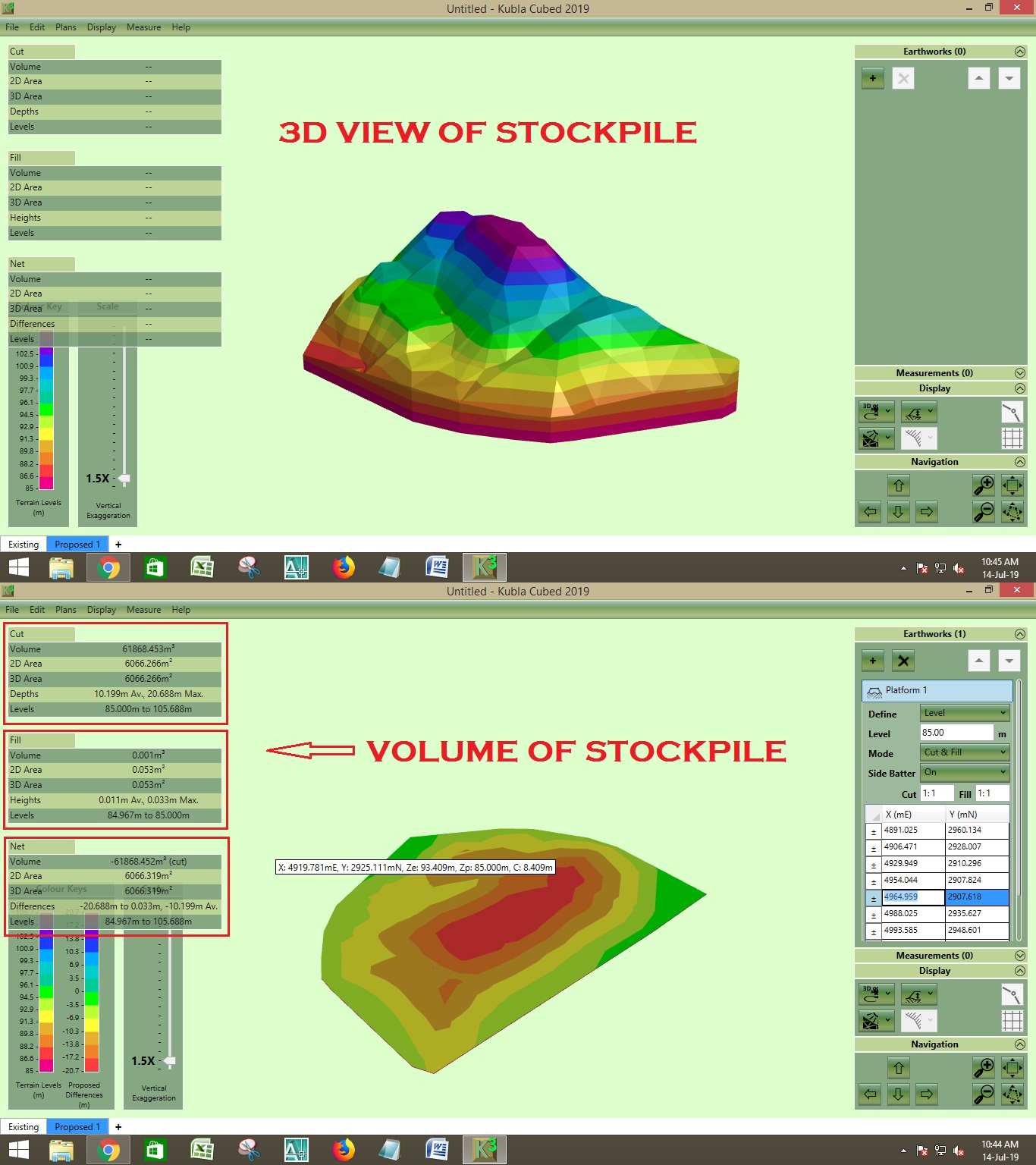

Click on the Annotation you would like to duplicateĢ. You can now duplicate your Annotations within the same map!ġ. Now, when you compare those measurements, you will be comparing the same area, location and volume, thus resulting in the most accurate change-over-time calculations! This is done in the same way we copy annotations simply select that option from the drop-down menu.Ĭongrats! You have now copied annotations from a previous flight. You now also have the ability to import annotations from a selected map into a current map.
#Stockpile area calculator how to
This can be done natively within our app! Find this in the annotations drop down of the left panel:įor more detailed instructions on how to copy annotations, click here: Copy Annotations For instance, if you have piles changing on a daily, weekly, or monthly basis you may want to consider copying annotations from map to map. Using the Elevation Toolbox (on the right), the small pile becomes easily viewable, enabling you to avoid defining a point of the base on top of the rocks.Ĭreating identical annotations is important for change-over-time mapping. Defining the base layer on top of the small rock pile would lead to inaccurate volume calculations. In the Orthomosaic (on the left) it is difficult to see the small pile of rocks to the left of the stockpile. To more easily see the nuances in the terrain, we recommend using the Elevation Toolbox as the base layer of the map when computing volumes.īelow is an example that demonstrates why using the Elevation Toolbox is a best practice when calculating volumes.

Sometimes it can be difficult to see the base of a stockpile when looking at the Orthomosaic image, due to shadows or similarly colored surrounding areas.

There are three base-plane options available for volume calculation Linear Fit, Lowest Point and Triangulated.įor more detailed information on choosing a baseplane, custom elevations and FAQs, please visit this page: Selecting a Baseplane Using the cross arrows in the middle, you can shift the area of interest in order to automatically recalculate the result.Ĭhoosing the appropriate base plane will help you ensure that you are recording accurate measurements.Units can be displayed in the Metric or Imperial system. Here is an example result:Įxample volumetric calculation. Adjust the points until you are happy with the area of interest.Add points around the stockpile for which you want to compute the volume.Ĭlick or tap to add points to complete the polygon.

The tools in the lower right allow you to undo, or complete your polygon.


 0 kommentar(er)
0 kommentar(er)
